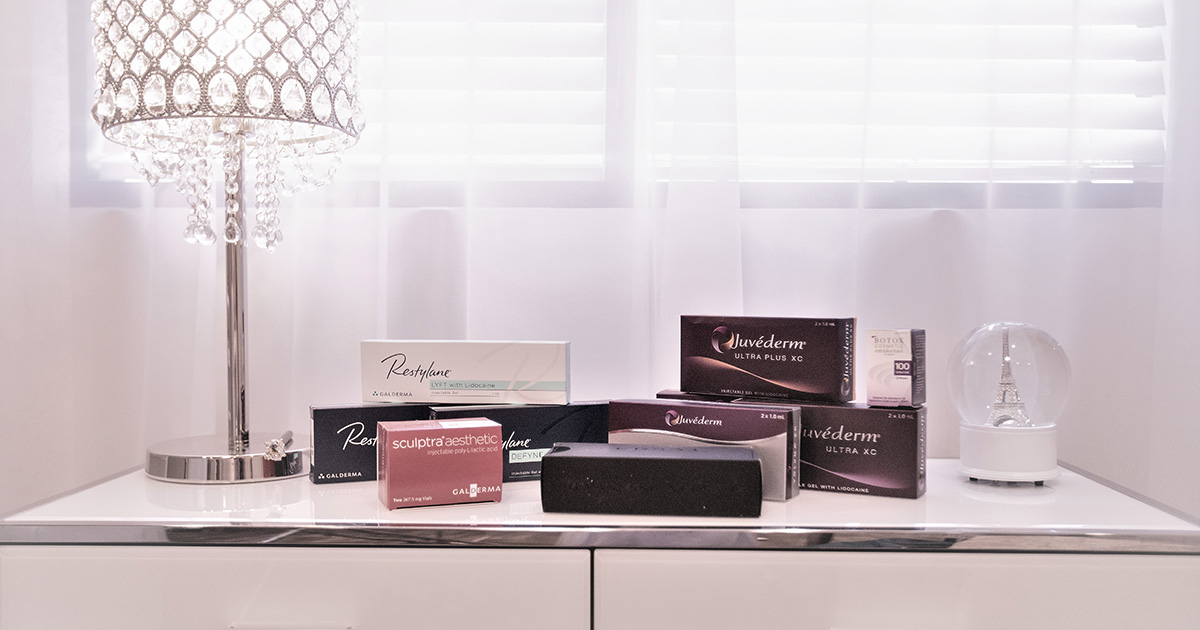
Although styles have changed significantly over the centuries, youth and beauty are ideals that have been celebrated throughout human history. Over time, people developed many ways of achieving a more youthful, attractive appearance, including cosmetics, and more. With the advances of modern medicine within the last few decades, more people than ever are taking advantage of the ways that specific medical procedures such as cosmetic surgery and esthetic therapy can help restore and rejuvenate their bodies.
However, more and more individuals are looking for less invasive ways of achieving their ideal appearance. Demand for non-surgical esthetic therapies has increased by over 450% since 1997—a true testament to the fact that while Americans want to pursue lasting treatments that contribute positively to the way they look and feel, surgery isn’t always the answer. Fortunately, a new area of medicine has arisen to address this need and help people striving for their true selves—the med spa.
What Is a Med Spa?

The ideal combination of a traditional day spa and an esthetic medical clinic, a med spa allows you to receive non-surgical medical esthetic procedures from a licensed medical professional while in a spa environment. Depending on the location and state regulations, med spas may be operated by several different medical professionals from a range of training backgrounds. Some spas are staffed with nurses and supervised by a plastic surgeon while others are owned and operated by registered nurses with an off-site physician director. Regardless of the structure, however, a licensed, experienced medical professional must perform medical spa treatments.
Top med spa treatments often involve performing restorative treatments to the skin and other parts of the body that are more involved than typical spa offerings. Such procedures usually include injections and infusions, which are much less invasive than cosmetic surgery. In some cases, however, med spas with a board-certified plastic surgeon may be able to refer patients for surgery as well.
What Treatments Do Med Spas Offer?

The typical spa services menu at your local spa may include such familiar items as manicures, pedicures, and facials; however, a medical spa services menu is quite different. Whereas traditional spas tend to focus treatments on the skin’s surface, med spas utilize medical procedures that aim to restore the skin from the inside out. Such restorative medical procedures often include:
- Microneedling. Also known as collagen induction therapy, microneedling uses multiple tiny, sterile needles to prick the skin. In turn, these tiny punctures promote collagen production and generate smoother, firmer, and more toned skin—without the fine lines, sagging, and creping low collagen levels often produce.
- Neuromodulators. More commonly referred to by their brand names (Botox and Dysport, among others), neuromodulator injections serve to relax the muscle tissue directly beneath the skin by inhibiting the signals between the nerves and the muscle. By preventing excess contraction beneath the skin, neuromodulators can soften the appearance of wrinkles and deep lines.
- Fillers. Like neuromodulators, fillers aim to soften the appearance of wrinkles and lines in the skin. However, instead of working within the muscle, fillers like JUVEDERM, Restylane, and Revanese are injected between the skin and muscle to support and fill the creases caused by aging skin.
- Vitamin injections and infusions. Many people suffer acute or chronic vitamin deficiencies—particularly pertaining to a lack of Vitamin B12, which can cause anemia and neurological conditions. Med spas often offer intramuscular vitamin injections utilizing B12 combined with other essential vitamins to address deficiencies, restore nutrient balance within the body, and promote effects like longevity, immunity, hydration, and more. Other vitamins often include magnesium, zinc, Vitamin C.
- Hair restoration. Some med spas offer hair restoration services that include stem cell therapies such as Procell Pure Stem Cell for hair follicles. Typically, a procedure like microdermabrasion or dermaplaning occurs first, which allows the stem cells to rejuvenate the very cells that produce hair, and encourages renewed growth.
- Collagen rebuilding. Like microneedling, collagen rebuilding techniques (usually Sculptra) are aimed at stimulating the production of the collagen that helps keep skin smooth, sturdy, and resilient. Collagen injections can provide temporary filler just as traditional fillers do, but have the added benefit of prompting the body to produce collagen moving forward as well.
- Fat burning injections. Exclusively reserved for the area beneath the chin, fat burning injections like Kybella (currently the only FDA-approved option) utilize a synthetic acid injection to rid the area of excess fat. Once the fat is gone, the cells in the area are no longer able to continue producing fat, leaving the area in ideal shape for years to come.
- Dermaplaning. Med spas often offer surface-level treatments as well, most of which are aimed at removing damaged or dead cells. Dermaplaning removes the top, dead, layers of the skin to reveal smoother, unblemished skin beneath and is particularly useful for addressing acne scarring.
